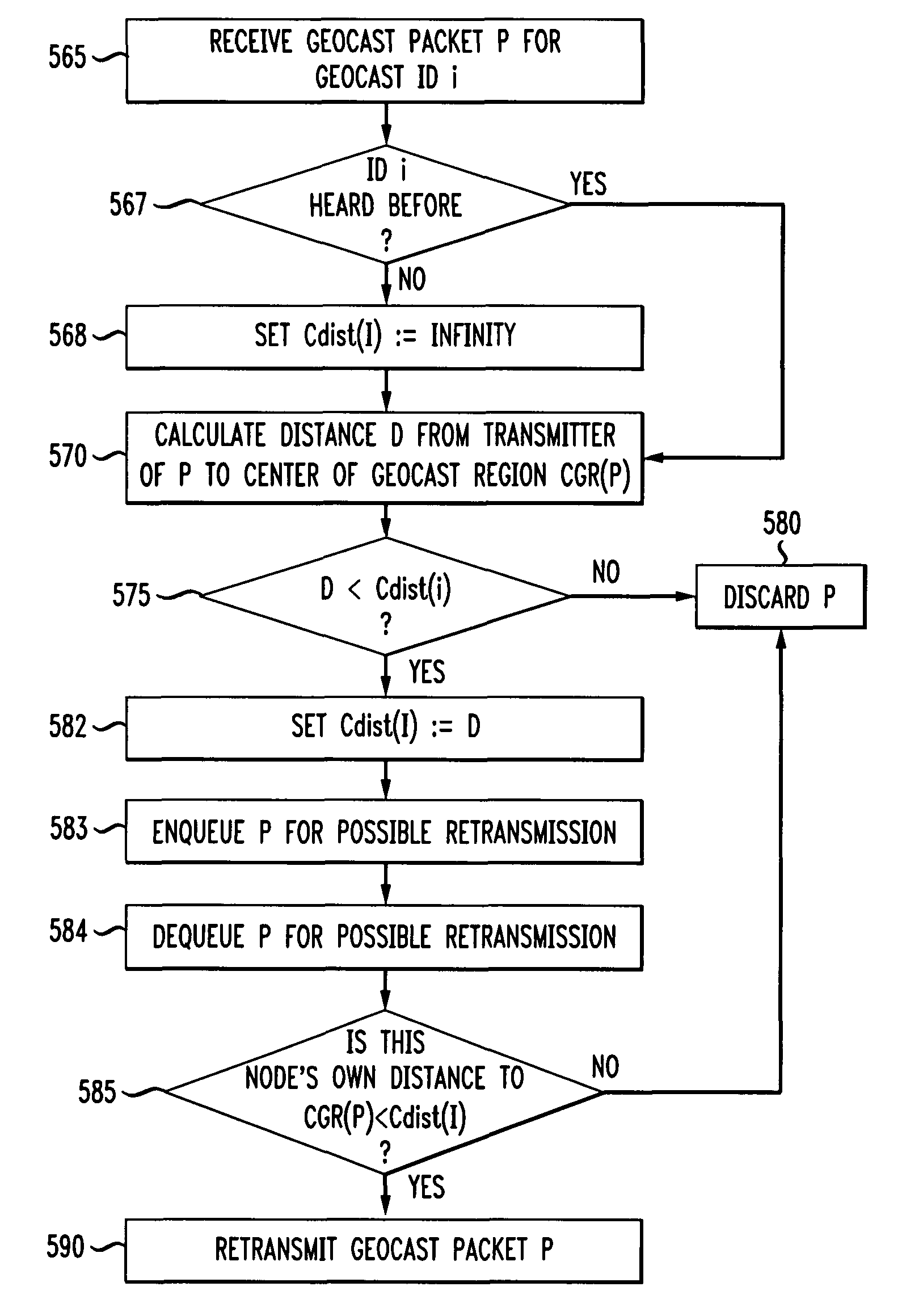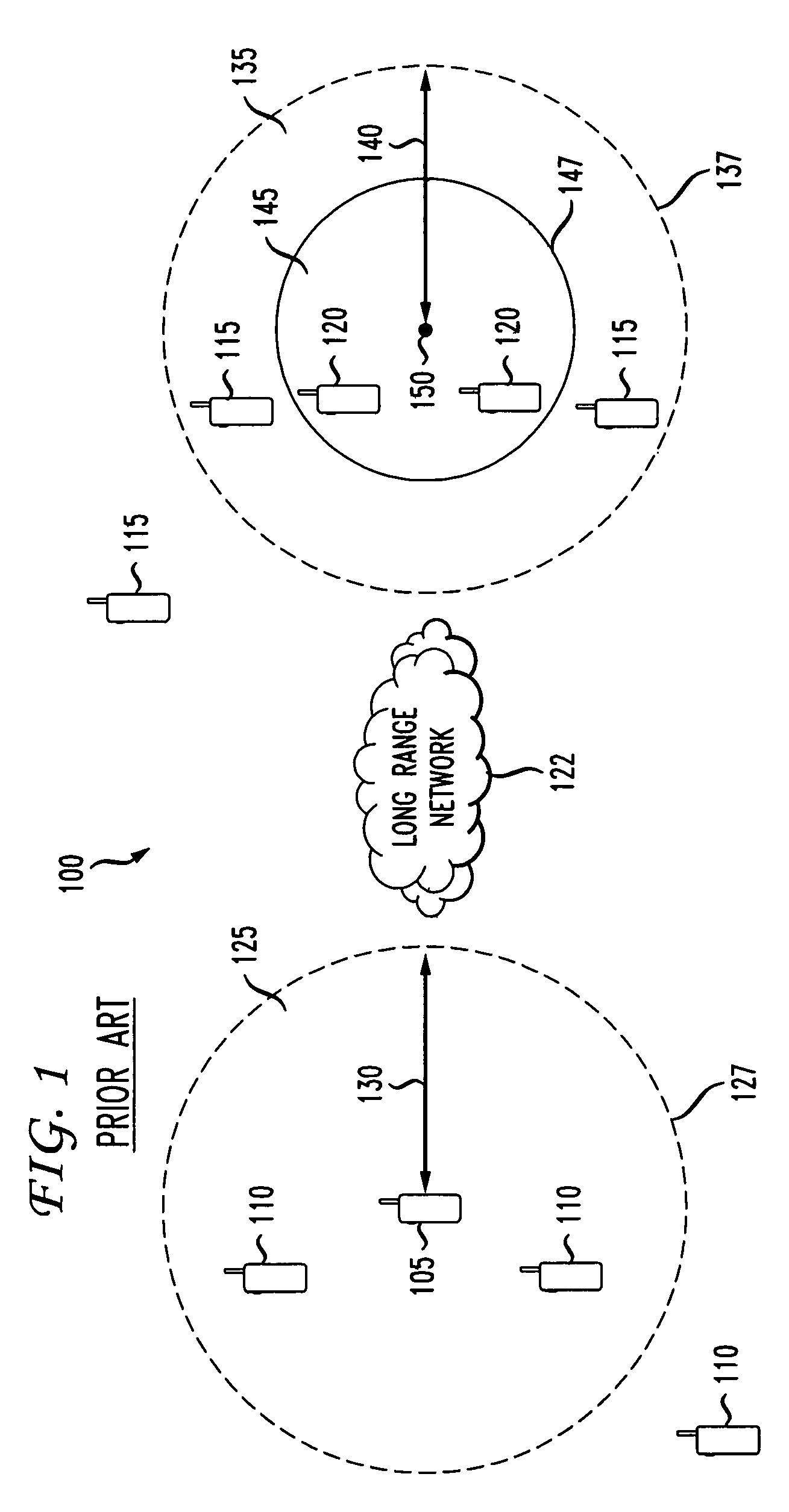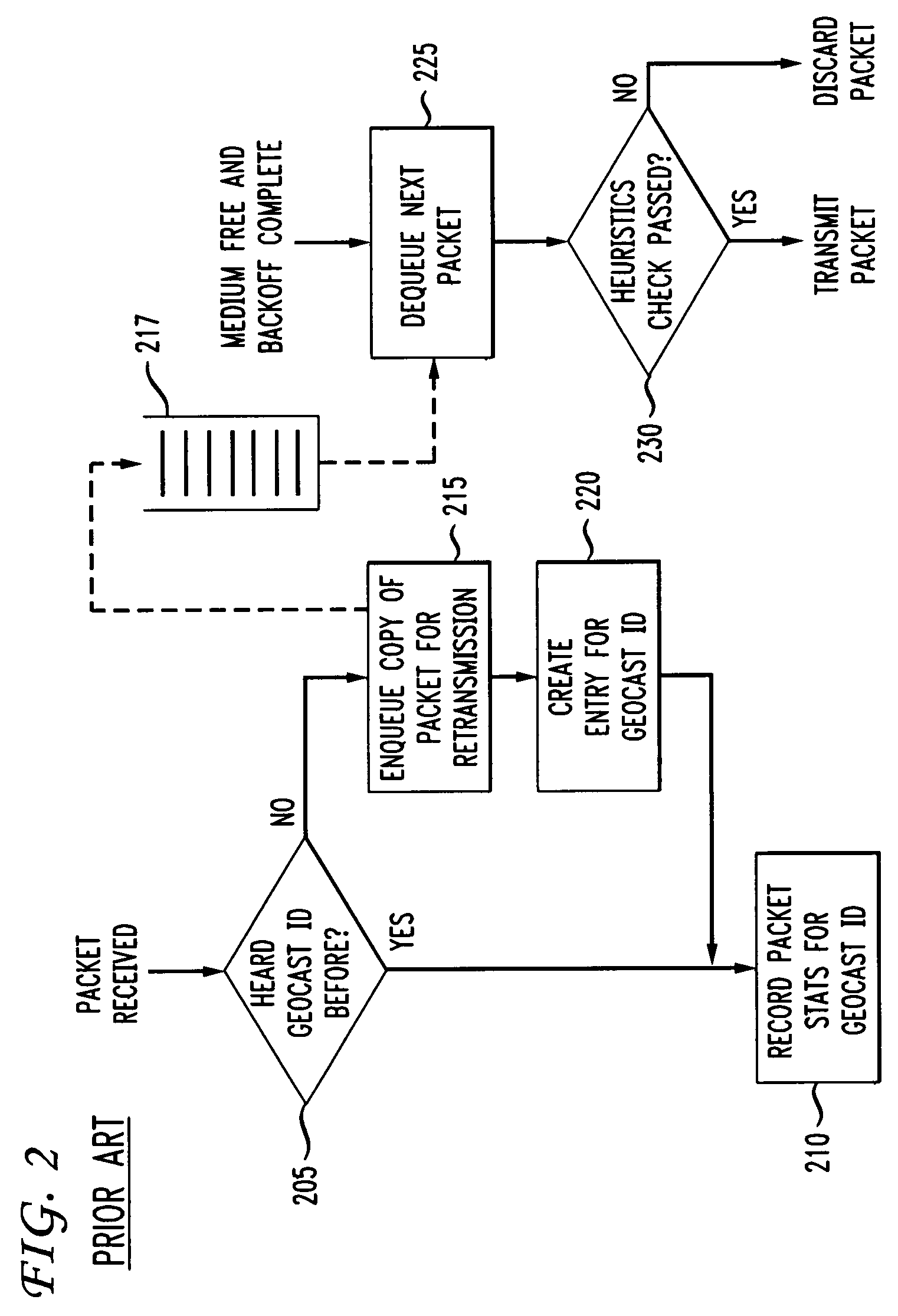System and method for geocasting in a mobile ad hoc network
a mobile ad hoc network and data packet technology, applied in the field of mobile ad hoc networks, can solve the problems of consuming a lot of manet processing power, not efficient for applications, and inability to receive messages from intended recipients outside the range of broadcasting terminals, so as to improve the handling of complex environments
- Summary
- Abstract
- Description
- Claims
- Application Information
AI Technical Summary
Benefits of technology
Problems solved by technology
Method used
Image
Examples
Embodiment Construction
[0023]FIG. 1 shows a prior art network 100 having a plurality of wireless terminals (also referred to as nodes) 105, 110, 115, and 120 that form a MANET. Each wireless terminal 105, 110, 115, and 120 is operable to determine its own geographical location through any type of location determination system including, for example, the Global Positioning System. Each wireless terminal is operable to transmit and receive packets on the MANET. This geocast framework includes a heuristics-based limited flooding technique, also referred to below as flat geocast.
[0024]At any given time, one or more of the wireless terminals may be operable to transmit and receive packets over a long-range network 122. The long-range network 122 can be any network in which packets can be transmitted from one long-range capable wireless terminal to another long-range capable wireless terminal.
[0025]Network 100 has an origination region 125 (outlined by origination region boundary 127) that covers a geographical...
PUM
 Login to View More
Login to View More Abstract
Description
Claims
Application Information
 Login to View More
Login to View More - R&D
- Intellectual Property
- Life Sciences
- Materials
- Tech Scout
- Unparalleled Data Quality
- Higher Quality Content
- 60% Fewer Hallucinations
Browse by: Latest US Patents, China's latest patents, Technical Efficacy Thesaurus, Application Domain, Technology Topic, Popular Technical Reports.
© 2025 PatSnap. All rights reserved.Legal|Privacy policy|Modern Slavery Act Transparency Statement|Sitemap|About US| Contact US: help@patsnap.com



